02/10/2020 - 05/11/ 2020
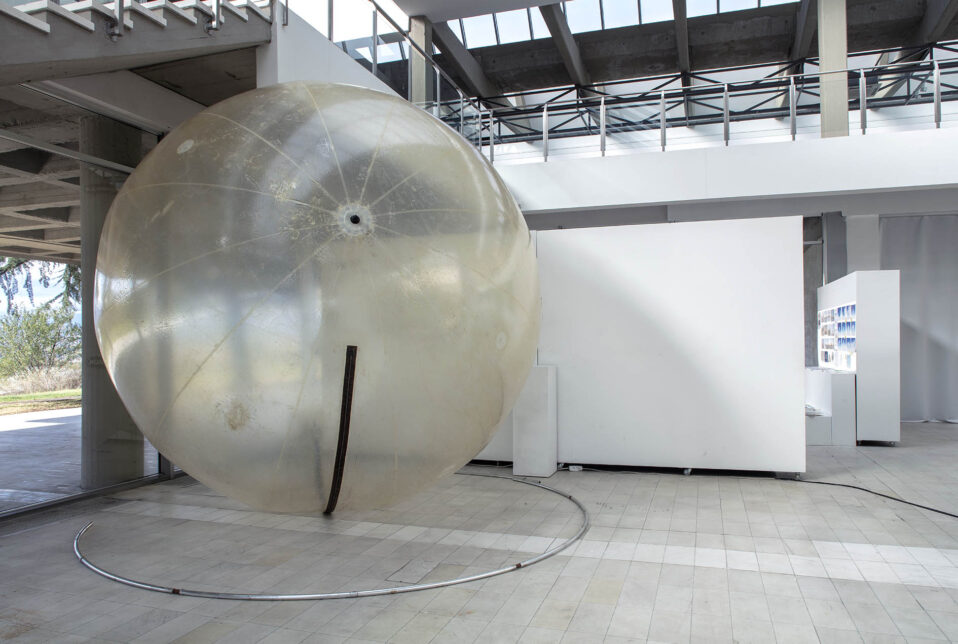
22nd of April, the day of planet Earth. This day has been marked for already half of century, aiming to emphasize the peoples awareness of the importance for preservation for healthy living environment. Question rises ” What have we done for this past 50 years?” Instead of caring for the nature we managed to accelerate the process of its degradation. We managed to entirely ignore the suggestions of the scientists that pollution and degradation of nature and the living conditions on our planet means going towards the edge of ontological abyss. It has showed that the ontological abyss has larger gravitational pull instead of our obligation to be responsible in the face of the future : the one, that according to certain observations, is already happening.
The concept of the exhibition Panic Room, is to offer certain courses of redesigning or even resetting of our attitude towards natural and social surrounding. Actually , it’s all about different approaches of connecting and solidarity between people and their surrounding ( as opposed to the usual way in which living conditions are taken for granted, as something given to us and belonging to us). At the same time, the exhibition is also a critique of the neoliberal financial, technological, biopolitical, or necropolitical strategy of manipulating and colonizing all spheres of spatial, biological, and symbolic existence.
Panic room does not mean any safe place to hide (as in David Fincher’s movie from which the title is borrowed), but refers to the intimate, inner space as a place of decision for a decisive turn of thought: instead to accept that it is much easier to imagine the end of the world than the end of capitalism, to leap, leap into thinking and to imagine the end of capitalism, calling for “a new country, a new people”( Deleuze&Guattari) Instead of an ecology of fear, an ecology of thought.
The exhibition will feature 12 artists in different media: Iskra Dimitrova, Nehat Beqiri, Verica Kovachevska, Nada, Prlja, Velimir Zhernovski, Matej Bogdanovski, Hristina Ivanoska, Yane Chalovski, Gjorgje Jovanovikj, Filip Jovanovski, Nikola Uzunovski and the collective OPA (Denis Saraginovski, Slobodanka Stevchevska).
Curated by: Ljiljana Nedelkovska
The exhibition is supported by the Ministry of Culture of North Macedonia.
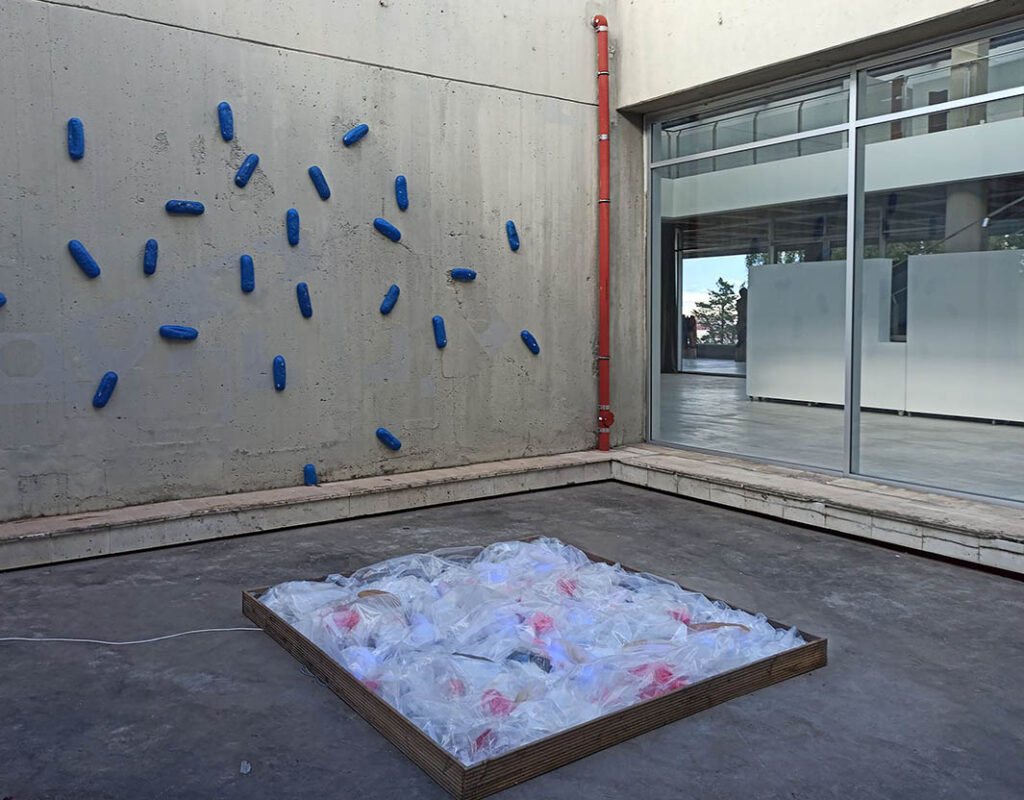
Nehat Beqiri, Blue Bread, 2020, installation
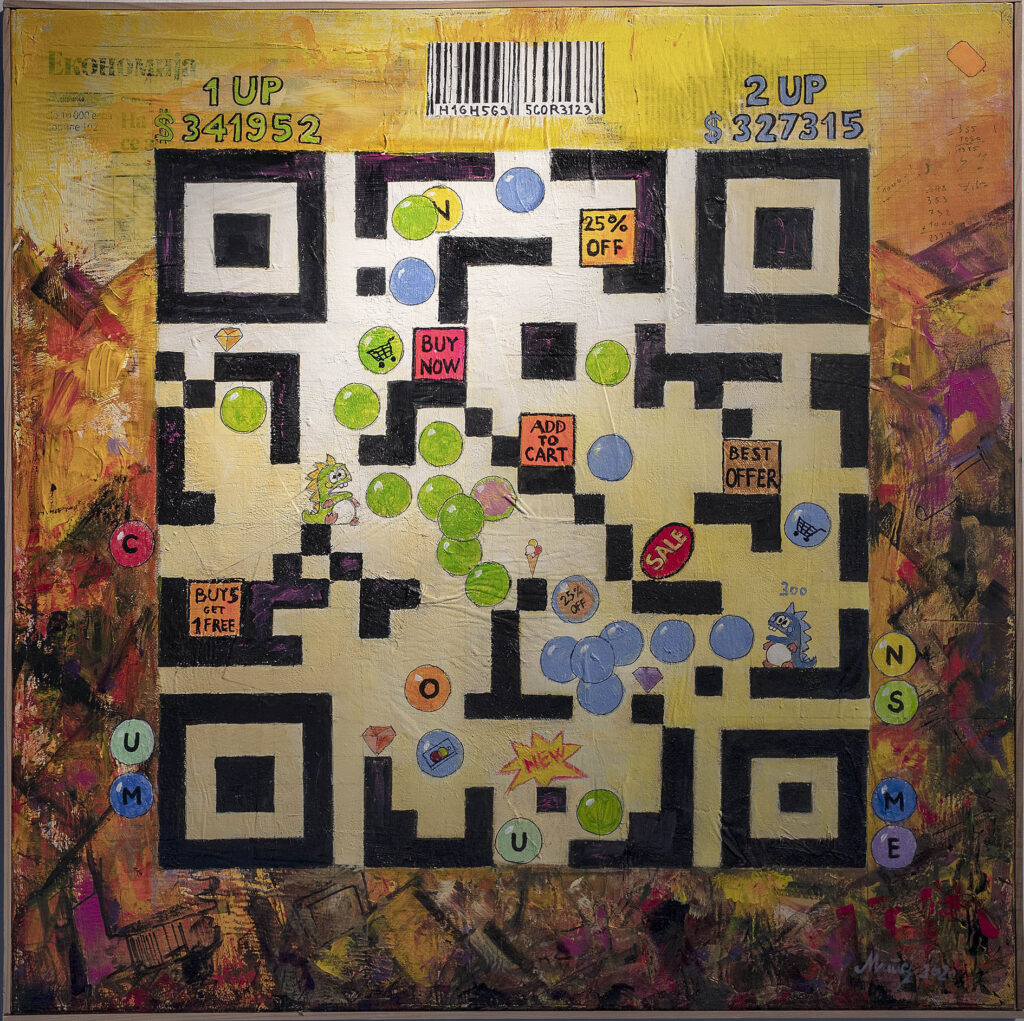
Matej Bogdanovski, Consumerism, acrylic on canvas, 70х70, 2020
Consumerism is a game played by many, some play it consciously, but many are totally unaware of their involvement. The game is tempting and easy to play, and ultimately it seems like everyone is a winner. There are two types of players, those who buy and those who sell. The aim of the first ones is to buy as much as possible, while the aim of the second is to sell as much as possible, and what makes the game interesting is that both sides need to find a way to achieve the goal. The sellers invent different kinds of adverts, offers and discounts that aim to attract the attention of buyers, while the buyers invent different ways to get money, like taking loans, credit cards, transferring from one account to another, work over hours, all in order to buy the things they long for.
And it seems like there is no end to the game, as in the ecstatic moments of the game the players hardly notice that a definite end will arrive as soon as all the resources are spent: when the whole planet is buried under the remnants of their game and all those shiny and new, bought and sold pleasures end up as waste in the landfills.
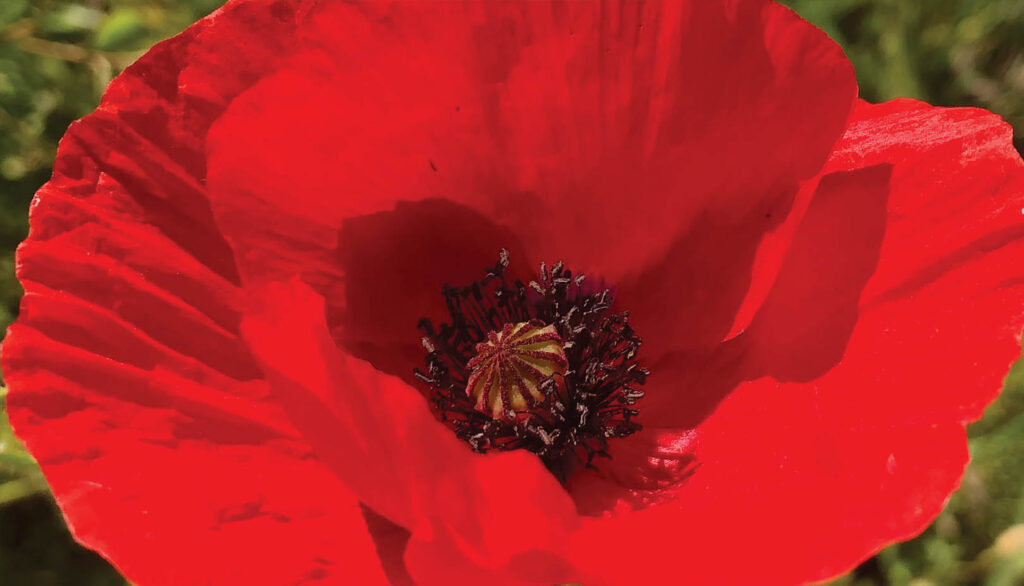
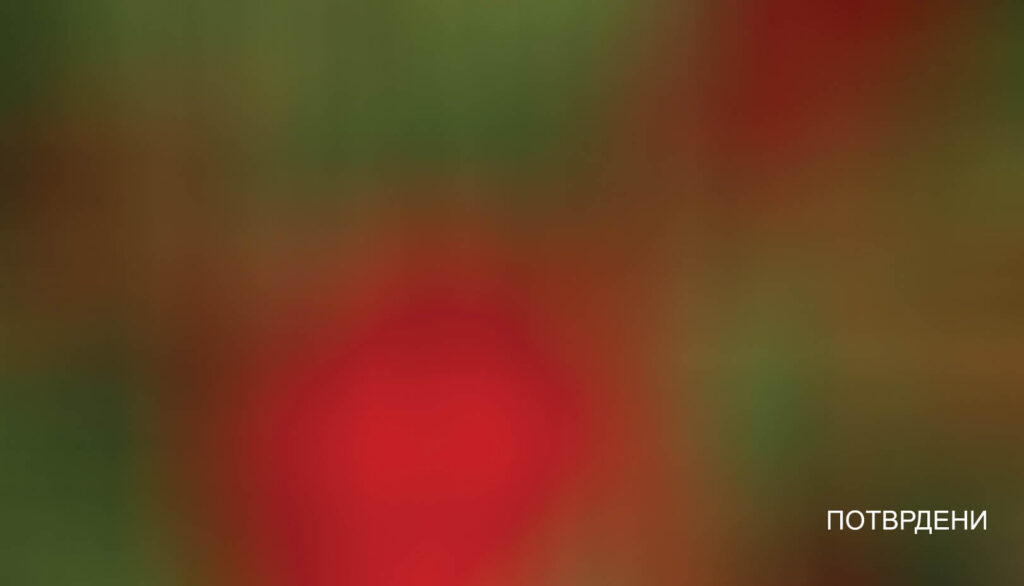
Iskra Dimitrova, Color Thirst, video, 01:33 min.
In this video made during the pandemics lockdown, the urge for color is confronted by the everyday shocking dryness of statistical terminology, which is then further confronted with corporeality.
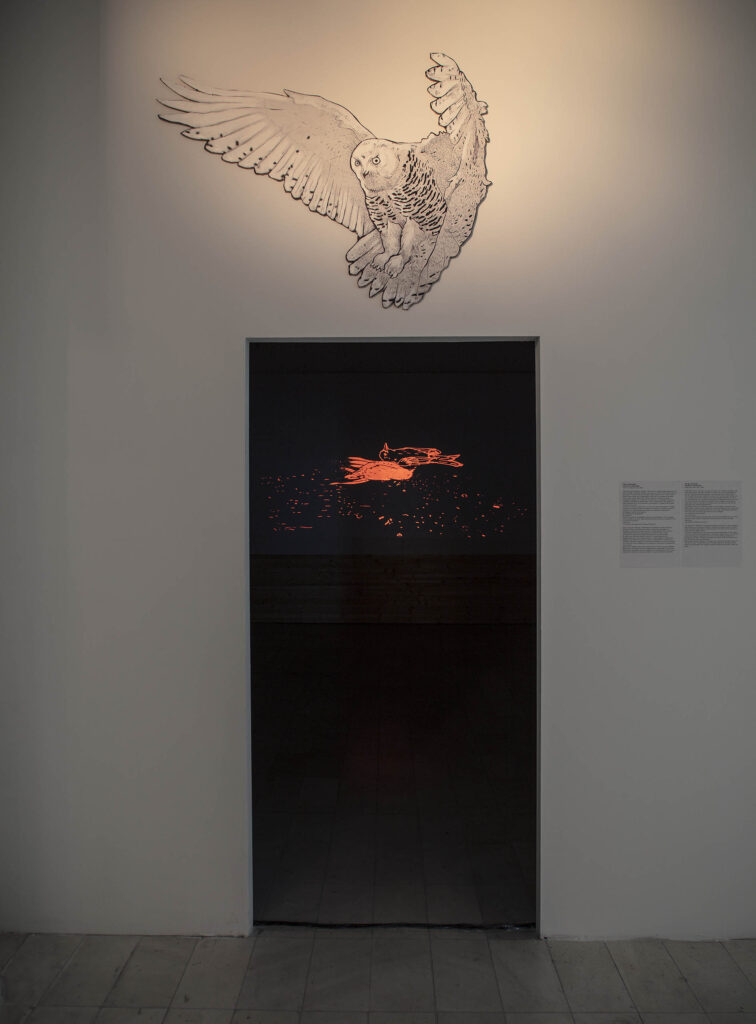
Gjorgje Jovanovic, Nocturnal Landscapes, object and video loop, 2020
Once upon a time, long ago…an old monk lived in an orthodox monastery. His name was Pamve. And once he planted a barren tree on a mountainside just like this. Then he told his young pupil, a monk named Ioann Kolov, that he should water the tree each day until it came to life. Put a few stones there, will you? Anyway, early every morning Ioann filled a bucket with water and went out. He climbed up the mountain and watered the withered tree and in the evening when darkness had fallen he returned to the monastery. He did this for three years. And one fine day, he climbed up the mountain and saw that the whole tree was covered with blossoms!
Say what you will, but a method, a system, has its virtues. You know, sometimes I say to myself, if every single day, at exactly the same stroke of the clock, one were to perform the same single act, like a ritual, unchanging, systematic, every day at the same time, the world would be changed.
Yes, something would change.
It would have to.
One could wake up in the morning, let’s say, get up at exactly seven, go to the bathroom, pour a glass of water from the tap, and flush it down the toilet.
Only that!
The Sacrifice, Andrei Tarkovsky
The owl sees in darkness. The symbolic meaning of the owl in many cultures is that it leads you to look beyond illusion; helping us to see that which is hidden. It also symbolizes the ability to intercept illusions and see the true meaning of one’s actions or state of mind. During one-night flight, the owl travels and sees the landscapes of the modern world full of environmental degradation, dystopian images of horror, the industrial and technological progress on one hand, and the growing alienation of humans on the other. Through his images and visions, we are confronted with the current and forthcoming disasters. Will we look at these images to once again only reconfirm the state of affairs or will we try to act? To start with, every morning to get up at, let’s say, exactly seven, go to the toilet, fill in a glass of water from the tap, and flush it down the toilet…
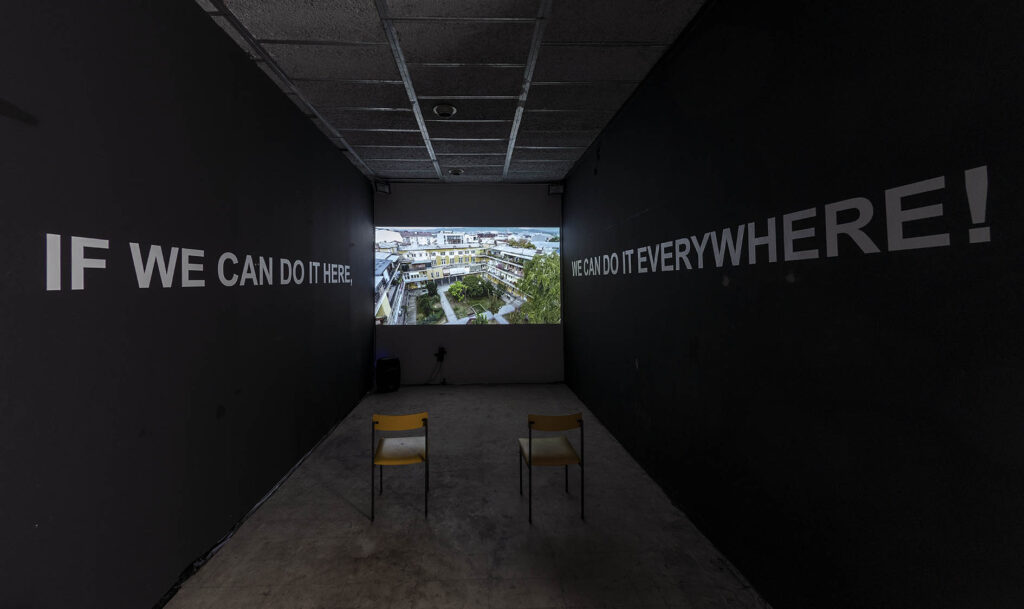
Filip Jovanovski, This Building (Truly) Speaks: #Fragment, video installation, text
If we can do it here, we can do it everywhere!
Erasing, hiding or ignoring the traces of collectivity, solidarity, responsibility from the collective memory of the local history is only a step towards accelerating the neoliberal worldview, which privatizes and hierarchizes all relationships in the social life. This leads to an almost unrecognizable change in the local context, influencing and transforming entire communities and different social strata as well as the entire social fabric.In the middle of the common yard and the common cinema hall of the residential Railway Building, one question resonates: how to live better together? And the echo increasingly repeats the question in the almost ruined building, treasuring the ideas of community, responsibility and solidarity, in the middle of the captured, ruined and corrupted city. It is here that existent conflicts can open up potential ruptures for the change of the general social structure.The Railway Residential Building in Skopje was built as a perimeter social housing block for the employees of the Railway Company in Yugoslavia and was completed in the late 40’s of the 20th century. It has its own yard, had collective laundries, which were transformed into apartments after the Skopje devastating earthquake in 1963, but also its own cinema hall as a sharing space, where at one moment 400 children watched movies.
The initiative “If Buildings Could Talk” is a performative experience that exists from 2015 in the Railway residential building, raised by the organization Faculty of things that can’t be learned (FR~U) by the author Filip Jovanovski and curator Ivana Vaseva. It develops itself by performing , i.e. it performs an active space as an aesthetic and ethical process of creating relations and bonds. Thus, the performance design is not physically built scenery, although it exists in a concrete building and a cinema hall, but is an experiential and emotional modeling by an artistic process, forming and transformative, which wants to become a caring community that will act beyond its own threshold. It carries a contemporary cross-disciplinary engaged approach that unites elements of visual and performing arts, extending their scope and framing and advocates for the preservation of the meaning of the public and the public space. In the frames of the exhibition „Panic room” the project “This building talks truly” performs in size 1: 100 as a condensed experience of past activities, as a multi-time archive, which should also tell us: If we do it here, we can do it everywhere! And this is exactly the design of the performative agonistic community.
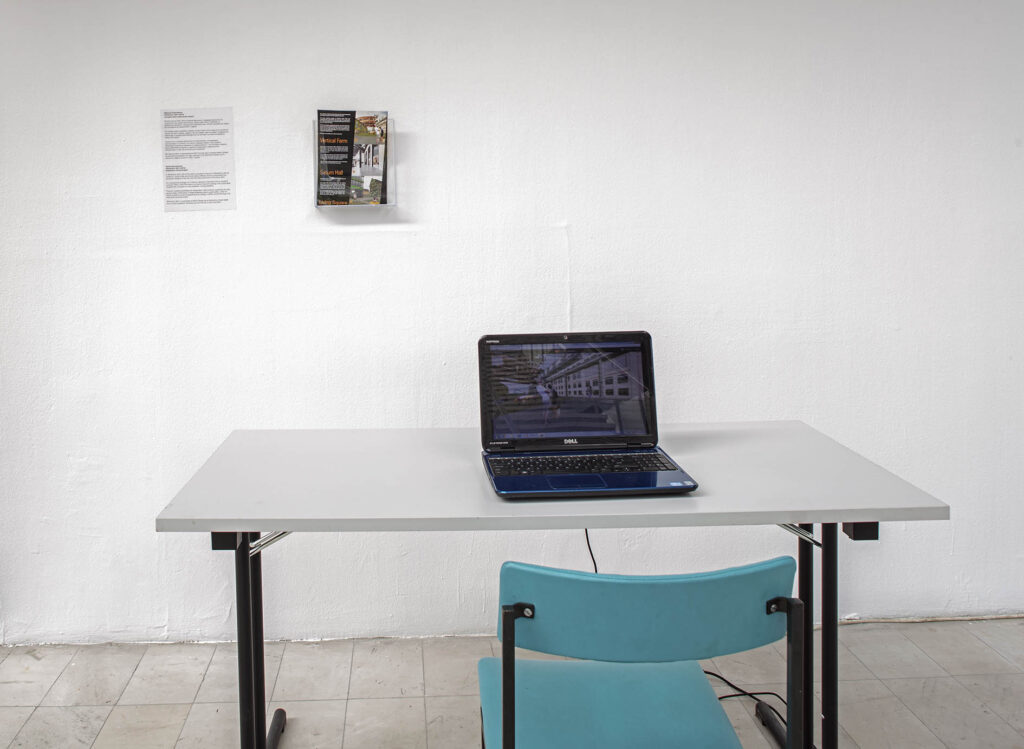
Verica Kovachevska, Winterthur 2041 (2014), interactive virtual project
In Winterthur 2041 (2014) the artist organized a city tour of Winterthur with an audience. Using iPads and virtual reality software, the tour showcased four landmark locations in the city and how they would look in the future 2041. An underground passage, for instance, became a blind spot where residents could go offline, while the historic city centre featured buildings with sustainable façades that consisted of living organisms, namely bacteria. The tour created possibilities for imagination, while critically examining the way we live today. Particularly, it raised questions about sustainability – what our future problems would be in relation to food, energy, mobility, and technology, and how could we solve these?
Winterthur 2041 is presented at MSU Skopje as an interactive virtual reality tour in which audience can tour the city in 2014 and 2041.
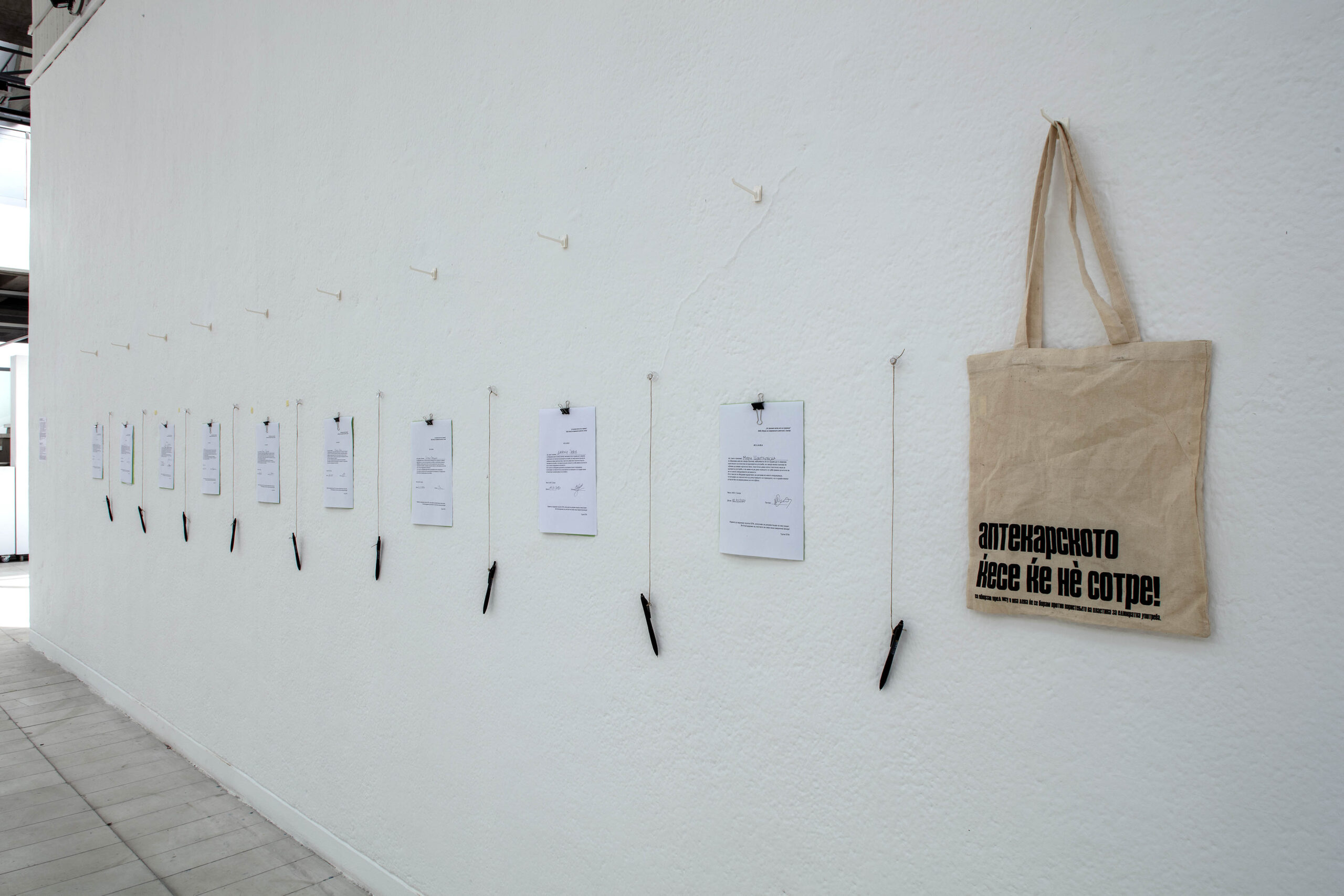
OPA (Obsessive Possessive Aggression), I Care Because You Care, 2020, cotton bags and statements (participatory project)
Frightened by the danger caused by a microorganism that fully changed our functioning, we neglected one fact: it is both a consequence and a part of a greater catastrophe. Consumerism,the race for profit, shortsightedness and the destruction of nature in disastrous proportions, work already towards an apocalyptic ending. The level of seriousness requires that each of us strives to actively participate in every segment of our daily life. Otherwise, we will have the “honor” to live the last years of humanity. This project seeks to facilitate such an action. Focusing on one of the causes of the environmental disaster – the production and use of disposable plastics – offers to support us in changing our habits. The rules are simple: take one of the tote bags of your choice, sign the statement below it and follow the instructions. If you are not sure whether you can, or you want to follow the guidelines given by the authors, please leave the bag for someone else. A “tell someone else” action is welcomed and desirable.
Thanks to Alen Redzepagic and Nebojsa Gelevski – Bane (font: Ekran Typeface).
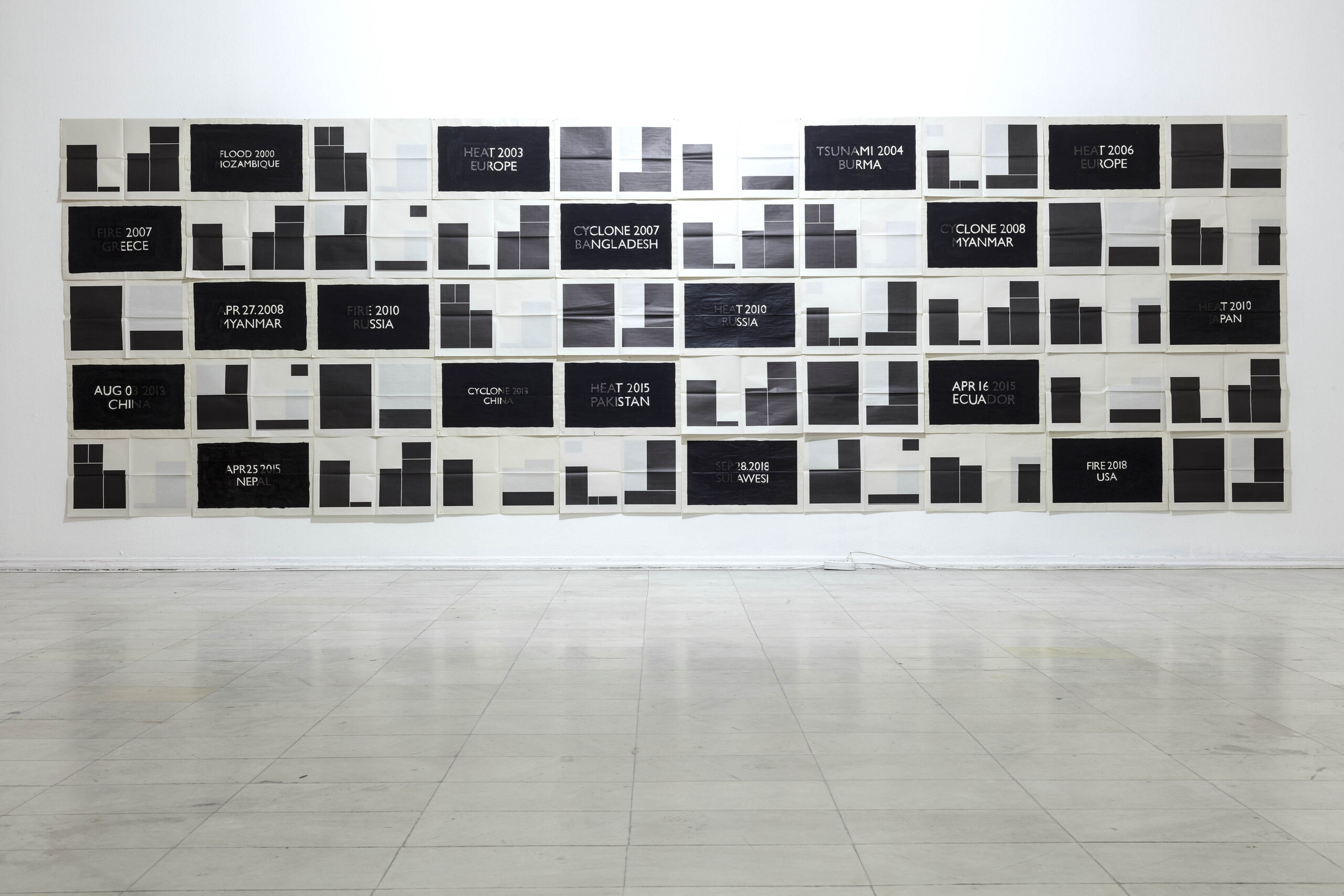
Nada Prlja, Disaster Diary, 2019, Installation with 6 pages of designed newspaper, 500 copies, offset printing in black colour
For the installation ‘Disaster Diary’ (2019), Nada Prlja re-uses and adapts her earlier work ‘Bad News Project’ (2004), a project which conceptually re-examines the content of the information that newspapers offer to the public on a daily basis. The exhibited newspaper from ‘Bad News Project’ is designed by the artist, in which the areas shown as black fields point to the issue of commercialisation of newspapers, blacking out only the advertisements published in the original newspaper. With the new project ‘Disaster Diary’, Nada Prlja paints over the newspaper of the ‘Bad News Project’ with the dates and cities/regions where natural disasters have occurred in between the years of 2000 and 2020. The increased number and frequencies of disasters inspired the artist to follow and record the dates of those disastrous events, similarly to the way in which she recorded the mere number of commercials in the newspaper in 2004. This is another project of Prlja in which she “recycles” her own work, in an attempt to avoid or limit the further use of new materials in the process of creating new works of art.
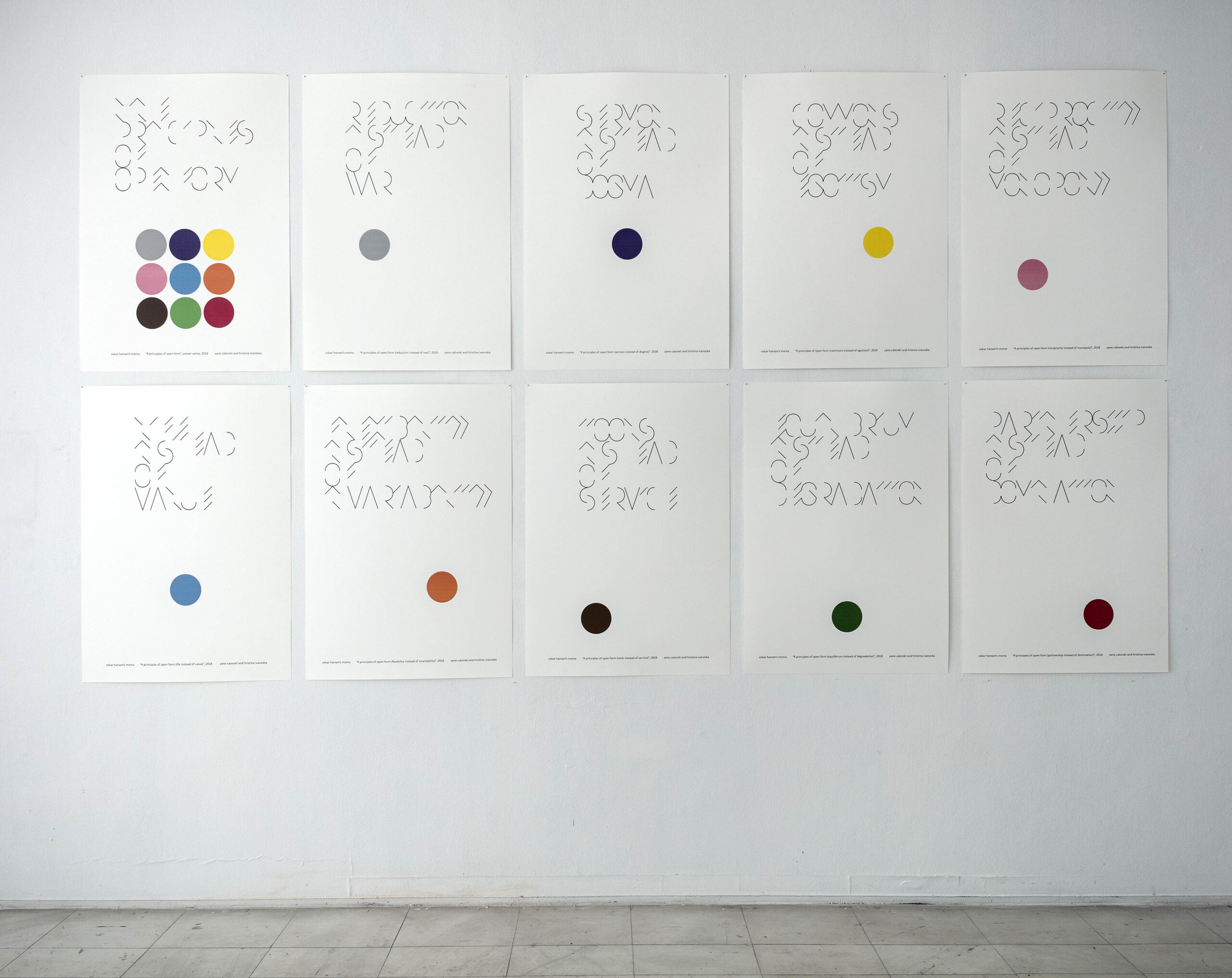
Yane Calovski and Hristina Ivanoska, Oskar Hansen’s Museum of Modern Art/Nine Principles of Open Form, 2018–2019, 10 ink-jet prints on acid-free paper (edition of 10 + 2 AP), 100 × 70 cm.
This new editionod digital graphics focuses on Oskar Hansen’s Open Form theory – an architectural, visual, sensory and pedagogical method – editing down nine detectable principles: 1. Reduction instead of War; 2. Sermon instead of Dogma; 3. Commons instead of Egotism; 4. Reciprocity instead of Monopoly; 5. Life instead of Value; 6. Flexibility instead of Invariability; 7. Tools instead of Service; 8. Equilibrium instead of Degradation; 9. Partnership instead of Domination. This humanistic code of conduct may serve as a building tool inspired by Hansen’s thinking and writing. Each of these nine principles is coded by a color from Hansen’s Linear Continuity System (LCS) of color identification, a “method for the initial determination of the location of the multifunctional housing zone.” The nine colors are linked to various functional or geological determinations of a conceptual terrain: red = social; orange = cultural; light green = natural; deep green = forest, wildlife; blue = climatic; purple = advectional weather; gray = terrain; brown = soil class; black = mineral resources. The typography in the posters interprets the Open Form with diagonal lines and semicircles, erasing all vertical and horizontal lines. This allowes a play with visibility and legibility of writing, encouring the reading to become an active performative process on part of the viewer. The posters series ultimately are seen as a tool – a visual distilled synthesis – playing of Hansen’s complex theoretical and visual principles applied in his practice.
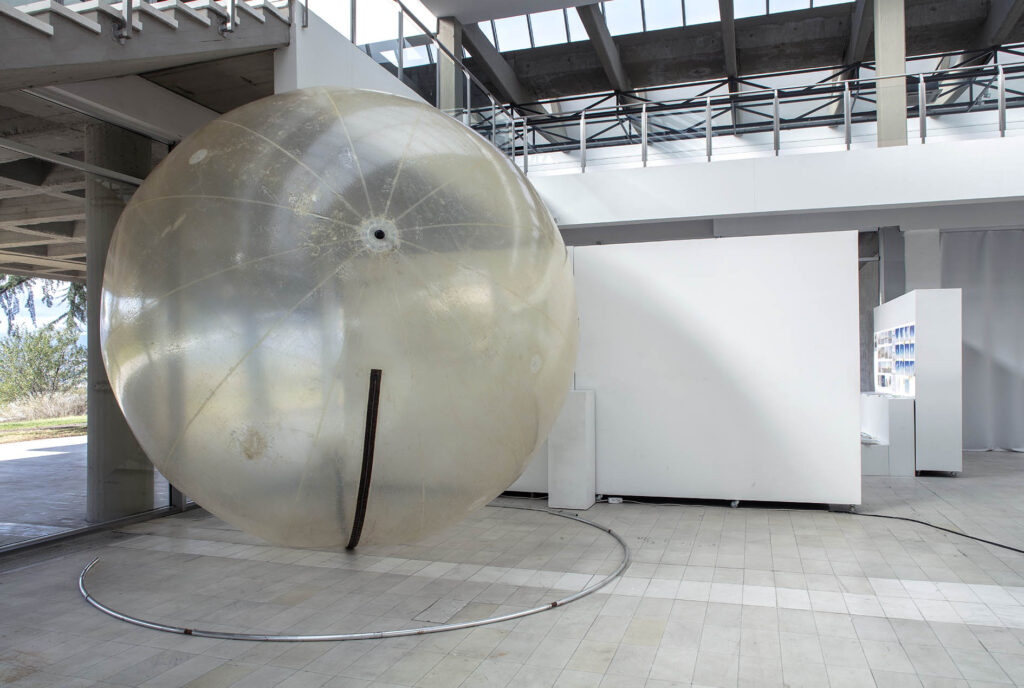
Nikola Uzunovski, My Sunshine, 2005-ongoing, interdisciplinary research project
My Sunshine is a utopian project, suspended between art and science, visionary ideas and social issues, poetry and hyper – technology. Its aim is to produce a flying object that reflects sunlight to a specific area of Earth and appear as the Sun itself. A broader version of My Sunshine contemplates the production of several copies of the aerostat, which shall create the effect of multiple suns in the sky. The project concentrates on areas around the Arctic Circle where, due to the rotation of the Earth’s axis, during the winter the Sun stays below the horizon, its rays unable to illuminate the ground. This phenomenon has a massive influence on the emotional state and relational dynamics of the local population. The project itself consists of a open process that evolves through a extensive participation of the public, moving from the scientific community, astrophysicists, engineers, architects, to embrace whoever wishes to join in the realization of a dream called My Sunshine.
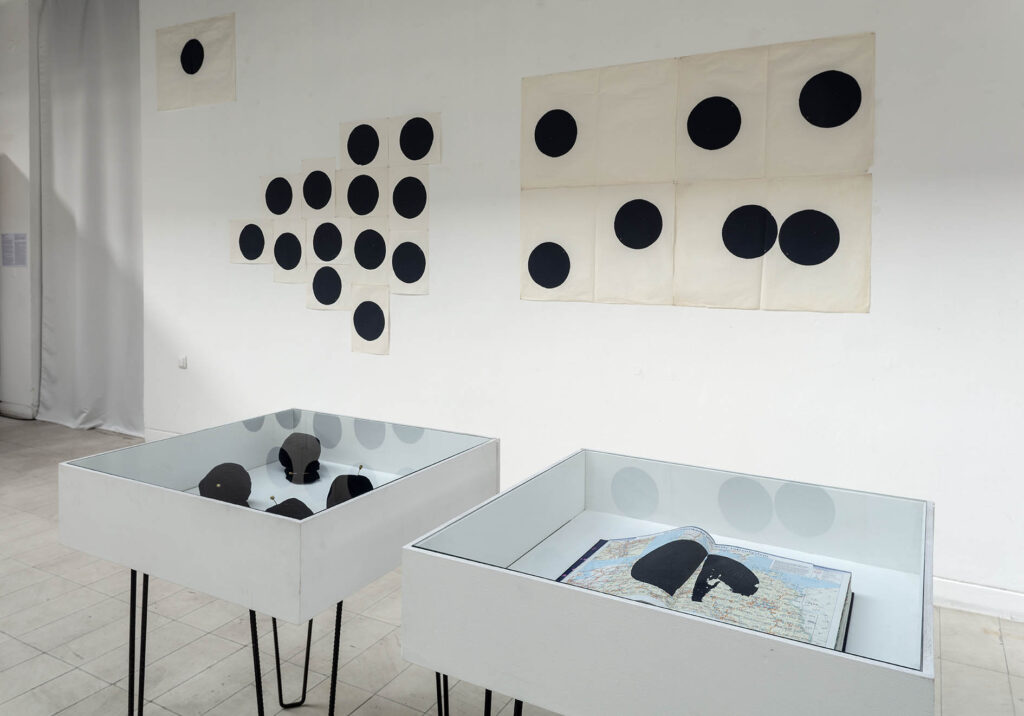
Velimir Zhernovski, Beyond’ Black, 2016 – 2020, installation
The installation is part of the long-term project BEYOND, on which Zernovski has been working in recent years and which includes various directions in the form of a series of screen printing graphics, objects and interventions on existing objects. Most elements of the installation are products obtained through discursive collaborations and reflections through projects and processes developed with various collectives and initiatives such as press to exit project space (Voodoo Dolls – Black Hole and Beam of Light 2017) and the art collective Partizan print (Partisan Atlas: current project of Partisan Print – Darkness 2020).